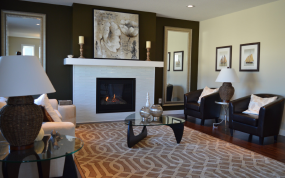In today’s fast-paced world, innovation is key to staying ahead in the real estate industry. With technology, design, and lifestyle needs constantly evolving, the concept of “Innovative Space” is reshaping how we think about living and working environments. Whether you’re looking to buy, sell, or invest in property, understanding the significance of innovative spaces will give you a competitive edge in the market.
What is Innovative Space?
Innovative space refers to properties or designs that push boundaries to enhance functionality, sustainability, and comfort. It goes beyond the traditional concept of a home or office and embraces features that cater to modern lifestyles, often incorporating technology, creative design, and eco-friendly solutions.
These spaces aren’t just about aesthetics; they are about adapting to the needs of today’s world. Whether through smart home technology, multifunctional layouts, or sustainable materials, innovative spaces reflect the way we live, work, and interact with the environment.
1. Smart Homes: The Future of Living
One of the most significant trends in real estate today is the rise of smart homes. These homes integrate technology to improve convenience, security, and energy efficiency. Imagine controlling your home’s lights, temperature, and even security systems from your smartphone. This level of automation not only enhances comfort but can also help homeowners save on energy costs.
Innovative spaces are increasingly featuring smart home systems, like voice-activated assistants, automated lighting, and advanced security features. Buyers are looking for homes that are not just beautiful but also tech-savvy, where daily chores can be handled with ease through their devices.
2. Flexible & Multifunctional Spaces
As remote work becomes more popular, there’s an increasing demand for properties with flexible spaces. Home offices, gym areas, and even entertainment rooms are no longer separate from the main living areas. Instead, they can seamlessly blend into multi-purpose rooms that adapt to a homeowner’s changing needs.
In innovative spaces, open layouts and modular designs make it possible to transform a living room into a home office during the day and an entertainment hub at night. Multifunctional furniture, like foldable desks or expandable tables, allows homeowners to maximize the use of every square inch.
3. Sustainable Design & Green Living
Sustainability is more than just a buzzword; it’s a critical component of innovative spaces. Today’s buyers are not only concerned with aesthetics but also with the environmental impact of their homes. Green design principles, such as energy-efficient appliances, solar panels, rainwater harvesting systems, and sustainable building materials, are in high demand.
An innovative space doesn’t just incorporate these features—it actively works to reduce its carbon footprint and provide a healthier, more sustainable living environment. By investing in green properties, buyers are not only contributing to the planet’s future but are also likely to enjoy lower utility bills and increased property value in the long run.
4. Wellness-Centered Spaces
More than ever, people are prioritizing wellness in their daily lives. Innovative spaces are designed with physical and mental well-being in mind. Features like natural lighting, improved air quality, ergonomic layouts, and access to outdoor areas all play a role in creating healthier environments.
Incorporating elements such as indoor gardens, water features, or meditation spaces can improve the overall atmosphere of a home or office. These features enhance the quality of life by promoting relaxation, reducing stress, and encouraging a connection to nature.
5. Urban Farming and Vertical Gardens
Another trend in innovative spaces is urban farming and the inclusion of vertical gardens in urban settings. As people become more conscious of the food they consume and the environmental impact of transportation, growing food at home has become a popular option.
Vertical gardens, rooftop farms, and indoor planting systems allow homeowners to grow their own herbs, vegetables, or even fruits in limited spaces. These eco-friendly features not only contribute to sustainable living but also provide fresh produce at the homeowner’s fingertips.
6. Co-Working & Shared Spaces
With the rise of freelancing, entrepreneurship, and remote work, co-working spaces have become an essential feature of modern properties. Innovative spaces often incorporate co-working hubs or flexible office areas where residents can work, collaborate, or even hold meetings without leaving their building.
In residential complexes, offering shared workspaces can make living more appealing to professionals, students, or anyone looking for a creative space to meet like-minded individuals. These community-focused spaces combine convenience with collaboration, fostering a sense of connection among residents.
7. Tech-Enhanced Amenities
Beyond smart home systems, innovative spaces are introducing new tech-driven amenities that enhance the living experience. From digital concierge services that cater to your every need to high-speed internet connectivity for seamless remote working, technology plays a key role in making modern properties more convenient and user-friendly.
Fitness centers with virtual trainers, contactless payment systems, and even interactive smart mirrors in bathrooms are becoming more common. These features not only improve convenience but also add a futuristic touch to everyday living.
Conclusion
As the real estate market evolves, the demand for innovative spaces will only continue to grow. Buyers are looking for more than just a place to live or work—they’re looking for environments that reflect their lifestyles and values. From smart homes and multifunctional spaces to sustainable design and wellness-centered features, the future of real estate lies in innovation.
If you’re buying, selling, or investing in real estate, staying informed about these emerging trends will help you make better decisions. Innovative spaces offer the perfect blend of functionality, comfort, and technology, and they are reshaping what it means to live and work in the modern world.

No responses yet